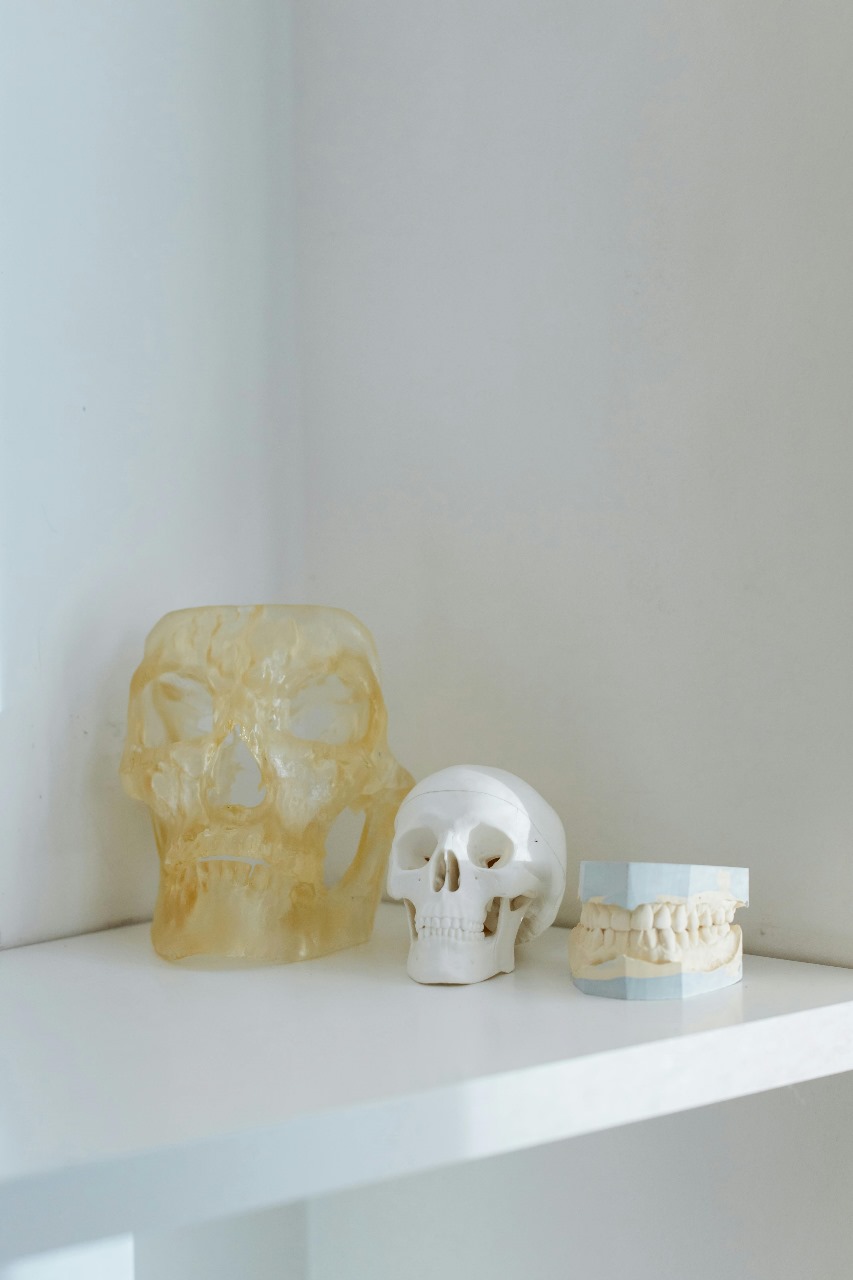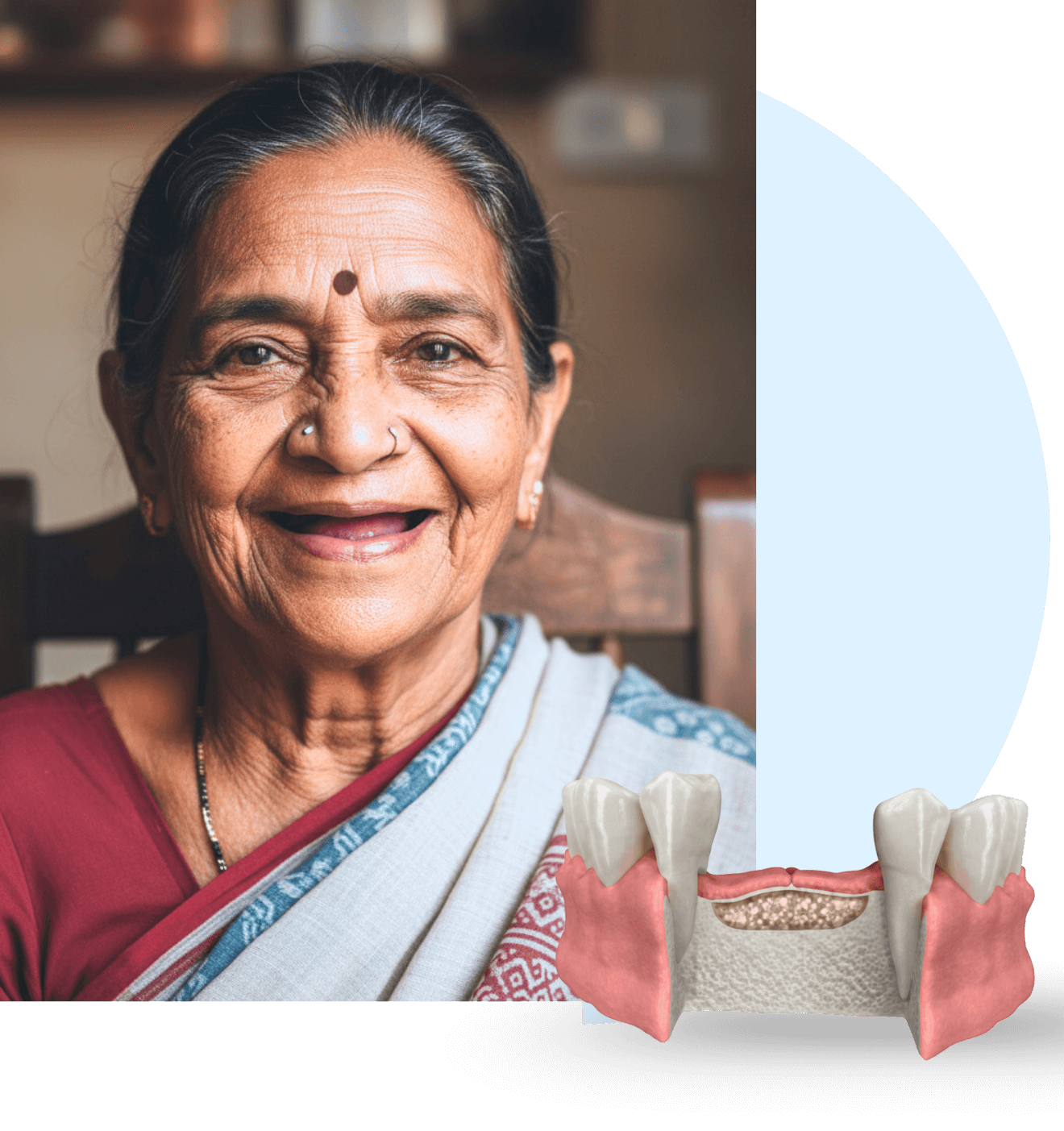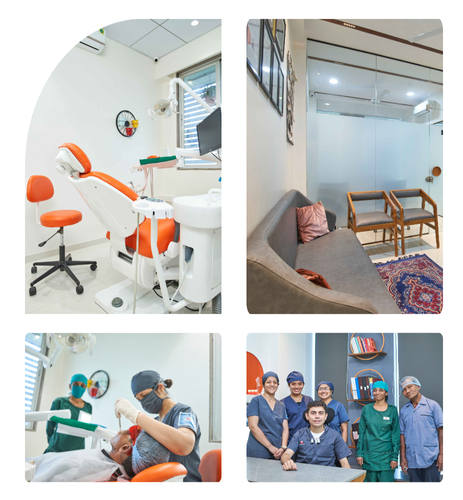Advanced Bone Grafting in Adajan, Surat
Rebuild lost bone for lasting dental implants and improved gum support

Healthy gums and a strong jawbone are essential—not only for maintaining oral health but also for ensuring your teeth function properly and your smile looks its best. Unfortunately, bone loss can result from gum disease, tooth extraction, trauma, or prolonged neglect, weakening the support system of your teeth and impacting both your facial structure and overall appearance.
At NxtDent Dental Clinic, we specialize in advanced, pain-free bone grafting and gum flap procedures designed to rebuild and restore lost bone tissue. These treatments strengthen your jawbone and create a solid foundation for long-lasting dental implants, helping your smile stay healthy and beautiful for years to come.
Why Consider Bone Grafting?:
Protect your smile’s future—consult with Dr. Ankit Desai, Surat’s leading periodontist and oral implantologist at NxtDent today!
Bone Grafting During Gum Flap Surgery
Bone loss from gum disease, tooth loss, or neglect can weaken your jaw, loosen teeth, and affect your smile. At NxtDent, we offer pain-free bone grafting and flap surgery to rebuild lost bone, protect teeth.
Bone grafting with flap surgery, also called guided tissue regeneration (GTR), is often done to: Fill bone loss, Reduce deep gum pockets,Strengthen support for teeth.
The procedure is minimally invasive, done under local anesthesia and laughing gas for your comfort.Cost: ₹8,000 to ₹25,000 per site
Why it matters: Early treatment can stop gum disease from getting worse and help you avoid more complex surgery later.
Bone Grafting for Dental Implants in Adajan, Surat
For dental implants to succeed, a healthy and strong jawbone is essential. If bone loss has occurred, bone grafting helps rebuild the site to support long-lasting implant placement. At NxtDent, Adajan, we offer advanced procedures like Guided Bone Regeneration (GBR) and Socket Preservation to restore lost bone and protect your future smile.
Socket Preservation in Surat – Keep Your Jawbone Strong Post-Extraction
Done right after a tooth is removed, socket preservation keeps the jawbone from shrinking. A small graft is placed in the socket and covered to encourage natural bone growth.
Cost: ₹18,000 to ₹30,000 (approx.)
Why It Matters: Rebuilding bone today ensures your implant stays strong for life. Early action means fewer surgeries and better results later.


Ridge Augmentation in Surat – Rebuild What Time Has Taken
If you’ve lost a tooth and didn’t get socket preservation, your jawbone may shrink over time—making it hard to place an implant. Ridge augmentation restores the lost bone’s height and width, creating a strong, stable base for implants.
It’s ideal for patients who visit long after tooth loss or have significant bone deterioration.
Cost: ₹30,000–₹50,000 per site (varies by case complexity)
Don’t let bone loss limit your options. At NxtDent, Dr. Ankit Desai uses advanced grafting techniques to help you reclaim a strong, implant-ready jaw—comfortably and predictably.
Sinus Lift Surgery in Surat – Build Strong Support for Upper Jaw Implants
If you’ve lost upper back teeth and don’t have enough bone for implants, a sinus lift can help. This advanced grafting procedure gently raises the sinus floor and adds bone, creating the strong foundation needed for secure, long-lasting dental implants.
Why You Might Need a Sinus Lift
Types of Sinus Lifts & Cost Range
Overall cost in Surat: ₹20,000–₹90,000 depending on your case and procedure type.
Key Benefit: A sinus lift not only makes implants possible—it improves long-term success, comfort, and bite function.



